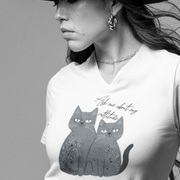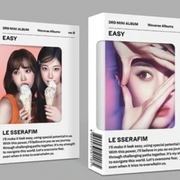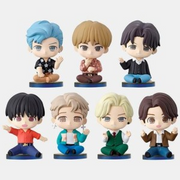"Exploring the Future of Pop Music: Trends, Artists, and Cultural Impact"

The Evolving Landscape of Pop Music
In recent years, the world of pop music has undergone significant transformations, reflecting the tastes and trends of a new generation of listeners. The rise of digital platforms has changed the way music is produced, distributed, and consumed, paving the way for a diverse array of artists to emerge. This blog post will explore the latest trends in pop music, highlighting key artists and their contributions to the genre.
1. The Shift to Digital Platforms
The digital revolution has reshaped the music industry, allowing artists to share their work with a global audience without the constraints of traditional record labels. Streaming services like Spotify, Apple Music, and YouTube have become the dominant platforms for music consumption, enabling listeners to access millions of songs at their fingertips. This accessibility has created a more competitive market, prompting artists to constantly innovate their sound and marketing strategies to capture the attention of fans.
2. Genre Blending and New Sounds
A notable trend in contemporary pop music is the blending of genres. Today’s artists are not afraid to experiment with different styles, resulting in unique sounds that resonate with diverse audiences. For example, the fusion of pop with elements of hip-hop, R&B, electronic, and even indie rock has given birth to a new wave of music that challenges conventional boundaries.
Artists like Billie Eilish, Lil Nas X, and Dua Lipa exemplify this genre-blending trend, pushing the envelope and redefining what pop music can be. Billie Eilish’s dreamy, melancholic sound incorporates influences from various genres, while Lil Nas X's crossover hit “Old Town Road” famously merged country and rap, creating a cultural phenomenon.
3. The Rise of Independent Artists
Social media platforms such as TikTok and Instagram have democratized music promotion and discovery, allowing independent artists to gain traction without the backing of major labels. This new wave of musicians often leverage these platforms to foster connections with their audience, showcasing their creativity through challenges, short clips, and engaging content.
As a result, many have found they can create a loyal fan base and achieve significant commercial success without traditional marketing methods. This shift has led to a more diverse music scene, where niche genres can thrive and artists can maintain creative control over their work.
4. The Importance of Authenticity
In an age where audience engagement is paramount, authenticity has become a key element in the success of pop artists. Fans are drawn to artists who share their genuine selves through their music and online presence. The vulnerability displayed in their lyrics and personal anecdotes fosters a deeper connection with listeners.
Stars like Taylor Swift and Ed Sheeran have built their careers on authenticity, often sharing their life experiences and personal challenges through their songs. This emotional connection can drive trends and commercial success, demonstrating the power of relatability in pop music.
5. Social Issues and Pop Music
More artists are using their platforms to address social issues, making statements that resonate with current events and movements. Songs that speak to themes of equality, mental health, and environmental awareness are gaining traction, reflecting the values of their audiences.
For example, the song "Fight Song" by Rachel Platten has become an anthem for empowerment, while Hozier's "Take Me to Church" critiques societal norms surrounding LGBTQ+ rights. By infusing social commentary into their music, artists not only engage listeners but also contribute to meaningful conversations beyond the music industry.
6. The Globalization of Pop Music
The globalization of pop music is another trend worth noting. Artists from various countries are breaking into the mainstream, drawing influences from their cultural backgrounds. K-pop has achieved enormous success worldwide, with groups like BTS and BLACKPINK reaching international audiences and integrating western elements while maintaining their unique flavors.
This phenomenon signifies a shift towards a more inclusive music scene, where cultural exchange enriches the pop genre as a whole. As artists collaborate across borders, they create fresh sounds that appeal to a broader demographic, further changing the landscape of pop music.
7. Future Perspectives
Looking ahead, the future of pop music is bound to be exciting and unpredictable. With technology continuously evolving, artists will likely find new ways to express themselves and connect with their fans. The rise of virtual concerts, AI-generated music, and interactive experiences may redefine how we experience and appreciate music.
As the industry adapts to these innovations, it will be crucial for artists to remain authentic and prioritize meaningful connections with their audiences. The essence of pop music may change, but its ability to bring people together and evoke emotion will remain constant.
Conclusion
The landscape of pop music is in a constant state of flux, influenced by a myriad of factors ranging from digital innovation to socio-cultural movements. As we celebrate the current wave of creativity and diversity within the genre, it is also a reminder of the power of music as a universal language that transcends boundaries. Whether through genre-blending, independent artistry, or social consciousness, pop music continues to evolve and inspire, promising an exciting future for artists and listeners alike.
```










































